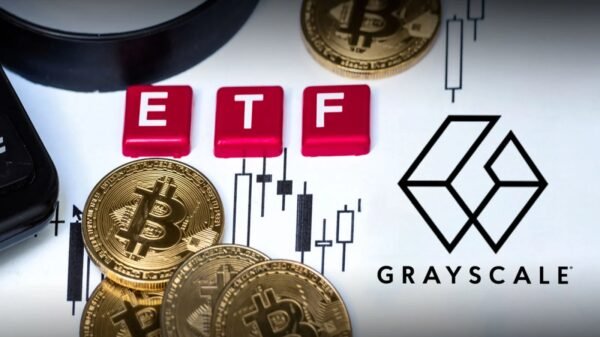![]()
Felicity Bradstock
Felicity Bradstock is a contract author specialising in Power and Finance. She has a Grasp’s in Worldwide Improvement from the College of Birmingham, UK.
Premium Content material
By Felicity Bradstock – Dec 21, 2024, 10:00 AM CST
- U.S. photo voltaic capability elevated by 29% in Q2 2024 and 21% in Q3, contributing to 64% of recent electrical energy technology.
- Home photo voltaic module manufacturing noticed a pointy rise, with new factories inbuilt key states like Alabama and Texas.
- Regardless of development, challenges comparable to tariffs, grid constraints, and expert labor shortages might have an effect on future enlargement.

The U.S. has skilled document photo voltaic development lately, supported by the Biden administration’s Inflation Discount Act (IRA) and larger entry to inexperienced funding. The Photo voltaic Energies Trade Affiliation (SEIA) has recorded document ranges of added photo voltaic capability during the last 12 months, as extra photo voltaic tasks had been added to the grid countrywide, considerably rising the contribution of solar energy to U.S. electrical energy technology.
In quarter two of 2024, the U.S. photo voltaic market installed 9.4 GW of capacity, marking a 29 % enhance on the identical interval in 2023. In Q3, an additional 8.6 GW was installed, with a 21 % enhance in installations from 2023. Throughout this era, photo voltaic vitality accounted for 64 % of all new electricity-generating capability added to the U.S. grid. Photo voltaic tasks now generate sufficient electrical energy to energy 37 million properties.
The states with the very best capability of solar energy are Texas and Florida, with 7.9 GW and three.1 GW respectively. Whereas a considerable enhance was seen in business photo voltaic capability in 2024, the SEIA expects to see a contraction of 26 % in residential installations by the tip of the 12 months.
The U.S. can be investing in strengthening its home photo voltaic module manufacturing trade, supported by funding from the IRA and Bipartisan Infrastructure Invoice (BIL). The home module manufacturing capability rose by over 10 GW to 31.3 GW in Q2 and by an additional 9 GW in Q3, to virtually 40 GW. This marks a big enhance from mid-2022 when the home manufacturing capability stood at simply 7 GW. The primary U.S. cell manufacturing plant additionally opened in Q3 this 12 months. The sharp rise in capability suggests the affect the IRA and BIL have had on the sector, offering larger funding for inexperienced vitality tasks, in addition to tax breaks and different monetary incentives.
The U.S. is funding home manufacturing and rising nearshoring actions to assist make provide chains extra resilient. That is a part of the federal government’s purpose to counter China’s dominance in inexperienced manufacturing, in addition to reply to the extreme provide chain constraints skilled throughout the COVID-19 pandemic. In line with the “US Photo voltaic Market Perception This autumn 2024” report by SEIA and Wooden Mackenzie, 5 manufacturing factories had been constructed or prolonged in Alabama, Florida, Ohio, and Texas. The report additionally said that, at full capability, the U.S. can now produce sufficient photo voltaic modules to fulfill virtually all home demand.
Whereas the longer term coverage outlook underneath President-elect Donald Trump stays unsure, there’s a sturdy photo voltaic mission pipeline throughout the U.S. The SEIA at present expects the U.S. photo voltaic trade to put in 40.5 GW in 2024, and an annual common of a minimum of 43 GW between 2025 and 2029. Among the principal sectoral constraints highlighted by the SEIA had been the getting old transmission infrastructure, which isn’t ready for the inflow of recent solar energy, a scarcity of expert labor, and interconnection delays.
The American Clear Energy (ACP) Affiliation expects utility-scale U.S. photo voltaic installations to see record-breaking development of greater than 32 GW by the tip of the 12 months. “The U.S. photo voltaic market is projected to develop with a Compound Annual Progress Fee of 6.6 % from 2025 to 2030, reaching 37 GW of annual new installations within the ultimate 12 months of this decade,” the ACP stated. The group cited the discount in polysilicon costs as the driving force for the optimistic short-term outlook however warned that the introduction of tariffs may enhance prices.
An ACP November report states that whereas the incoming Trump administration may go “to alter or take away sure parts of the IRA and accompanying steering… the IRA is unlikely to be utterly undone.”
Following document development in a number of areas, the photo voltaic trade expects to undergo from excessive import prices underneath the Trump administration. In November, Trump mentioned he deliberate to impose “an extra 10 % tariff, above any further tariffs” on imports from China, in addition to a 25 % tariff on imports from Canada and Mexico.
U.S. commerce officers additionally set preliminary tariffs on photo voltaic cells from the 4 predominant export international locations in Southeast Asia this 12 months, after U.S. producers complained that unfairly low-cost merchandise had been flooding the market. The Commerce Division established preliminary anti-dumping charges of 53.3 % to 271.28 % for imports from Vietnam, 125.37 % for Cambodia, 77.85 % to 154.68 % for Thailand, and 21.31 % to 81.24 % for Malaysia. China at present dominates the worldwide photo voltaic provide and has large-scale operations in all 4 international locations. A ultimate choice on anti-dumping tariffs is anticipated by April 2025.
Regardless of the anticipated introduction of tariffs on photo voltaic cells, and the potential discount in inexperienced funding underneath President Trump, the photo voltaic vitality mission pipeline stays sturdy. This 12 months has seen document additions of economic solar energy. Nonetheless, to encourage utility-scale additions within the coming years, larger funding should be supplied to enhance the U.S. grid and put together it for the inflow of solar-generated electrical energy.
By Felicity Bradstock for Oilprice.com
![]()
Felicity Bradstock
Felicity Bradstock is a contract author specialising in Power and Finance. She has a Grasp’s in Worldwide Improvement from the College of Birmingham, UK.
Associated posts

























































